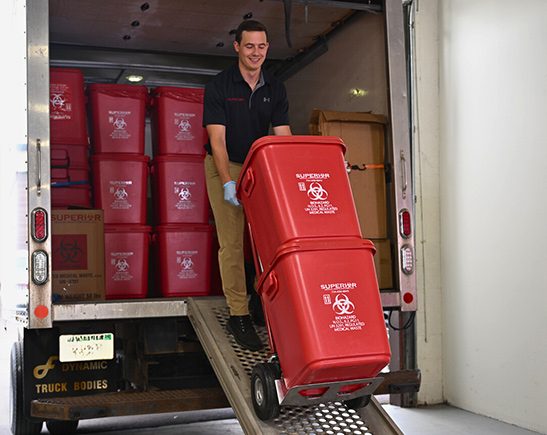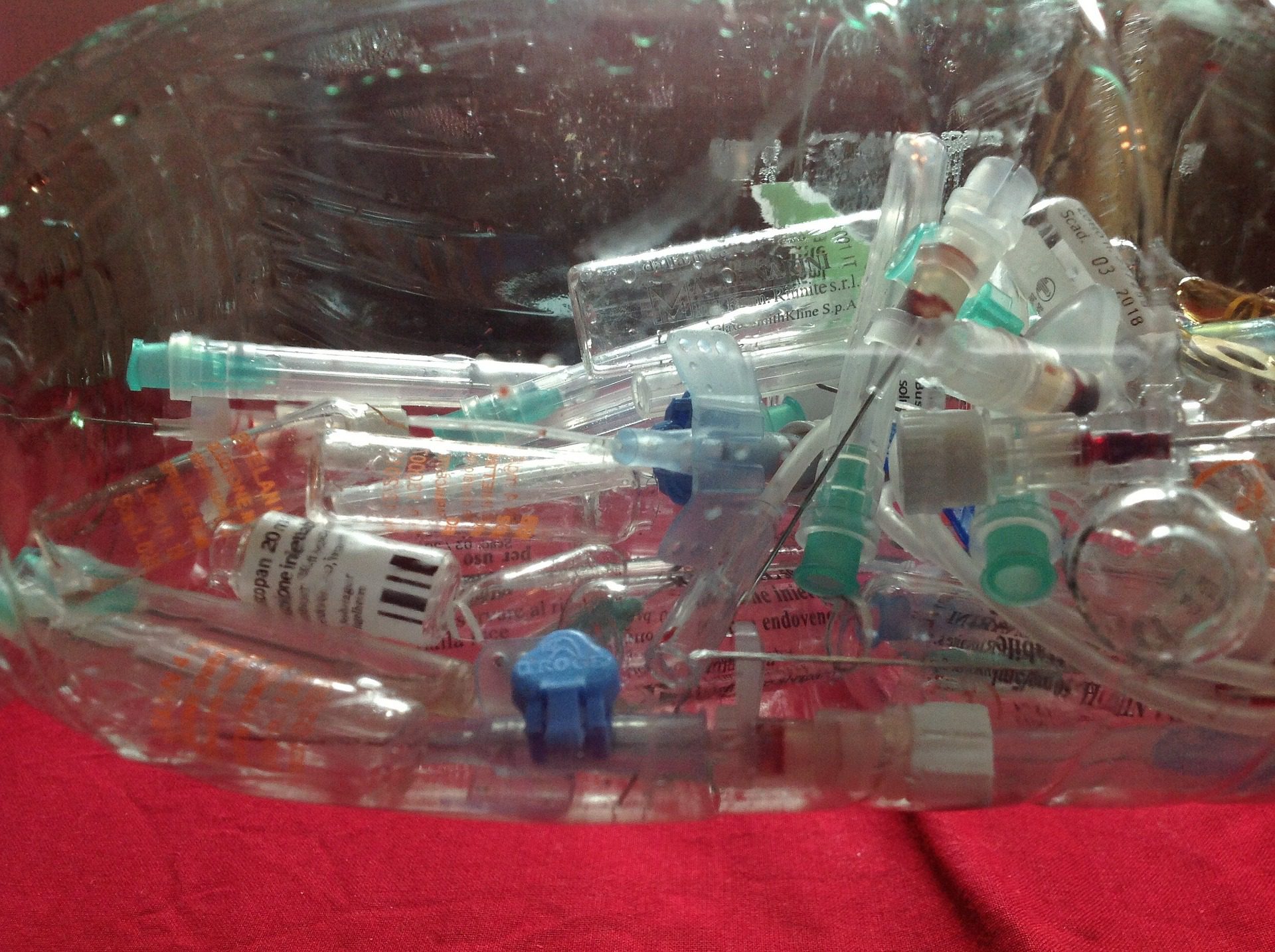Past Cleanup: Ensuring Safety with Professional Medical Waste Removal
Efficient and Ecologically Friendly Medical Waste Disposal Solutions
In the ever-evolving area of healthcare, the problem of clinical waste disposal remains a topic of extremely important significance. As health centers, centers, and other health care centers strive to offer top quality client treatment, they must likewise attend to the obstacle of efficiently and responsibly disposing of their waste.
Waste Segregation Practices
Efficient waste partition techniques are necessary to make sure the correct and risk-free disposal of medical waste. Clinical waste, that includes products infected with possibly infectious substances, have to be handled in a manner that minimizes the risk of harm to both public health and the atmosphere. Proper waste partition plays a crucial function in attaining this goal.
Waste partition entails the separation of different types of waste based upon their characteristics and possible dangers. This process ensures that each sort of waste is dealt with and dealt with suitably (medical waste disposal services with WasteX). It begins at the factor of generation, where medical care centers should have marked bins and containers for various waste categories, such as sharps, transmittable waste, pharmaceutical waste, and non-hazardous waste
By segregating medical waste at the resource, doctor can prevent cross-contamination and lower the risk of exposure to transmittable representatives. This practice additionally assists in the recycling and healing of certain materials. Setting apart and recycling clean plastics and glass minimizes the demand for raw materials and decreases the environmental influence of medical waste disposal.

Autoclaving and Sanitation Techniques
In order to make certain the safe and correct disposal of clinical waste following effective waste segregation methods, healthcare centers have to utilize autoclaving and sterilization techniques. Autoclaving is an extensively utilized method that utilizes high-pressure steam to sterilize clinical waste.
One more generally made use of sanitation technique is chemical sanitation. This involves dealing with the waste with chemicals such as ethylene oxide or hydrogen peroxide, which kill microorganisms by interrupting their mobile structure. Chemical sterilization is frequently used for heat-sensitive items or products that can not endure the heats of autoclaving. However, it is very important to keep in mind that chemical sanitation calls for correct handling and disposal of the chemicals utilized, as they can be dangerous to human health and wellness and the atmosphere if not taken care of properly.
On-Site Waste Treatment Equipments
Health care facilities have actually implemented on-site waste therapy systems to deal with the disposal of clinical waste in a reliable and secure way. These systems offer a practical and affordable remedy for managing clinical waste generated within the facility. On-site waste treatment systems make use of various modern technologies to get rid of and deal with of medical waste on-site, decreasing the demand for transportation to off-site facilities.
One generally used on-site waste therapy system is the microwave technology. An additional system is the chemical sanitation modern technology, which includes treating clinical waste with chemicals to eliminate microorganisms and lower its unsafe nature. medical waste disposal services with WasteX.
On-site waste treatment systems supply several benefits. First of all, they eliminate the threat of clinical waste being messed up during transportation, decreasing the potential for contamination and exposure to dangerous materials. Furthermore, these systems aid medical care centers follow waste monitoring laws by giving a convenient and efficient disposal approach. In addition, on-site therapy systems minimize the general environmental effect of clinical waste by decreasing transport and the demand for garbage dump area.
Recycling and Repurposing Campaigns
As medical care centers aim for lasting waste monitoring techniques, they are significantly discovering recycling and repurposing campaigns as a method of lowering the ecological influence of clinical waste. Reusing and repurposing efforts involve finding cutting-edge ways to reuse or transform clinical waste right into new products or materials. This not only helps to minimize the quantity of waste that finishes up in garbage dumps or incinerators yet additionally minimizes the usage of basic materials and power needed Going Here for producing new items.
One example of reusing in the medical care industry is the reprocessing of single-use medical tools. These gadgets, Click Here such as surgical tools or catheters, are commonly disposed of after a single usage. Innovations in modern technology and strict sterilization procedures have made it possible to securely clean, sanitize, and reuse these gadgets multiple times. This not just reduces the quantity of waste generated but additionally saves medical care facilities considerable prices related to purchasing brand-new devices.
An additional recycling campaign involves the recycling of plastic containers, such as medicine containers or syringe coverings. These containers can be collected, sorted, and sent out to recycling facilities where they are refined, thawed down, and transformed into new plastic products. This aids to conserve resources and reduce the need for virgin plastic manufacturing.
Along with reusing, repurposing efforts include locating different uses for medical waste. For instance, shredded paper waste from medical records or product packaging products can be repurposed as bedding material for animals or as insulation material (medical waste removal). In a similar way, natural waste such as food scraps from healthcare facilities can be composted and used as fertilizer in gardens or farming areas.

Renewable Power Solutions
One effective method to reducing the environmental impact of healthcare procedures involves carrying out renewable resource solutions. Medical care centers, such as facilities and hospitals, eat considerable quantities of energy for various objectives, including lights, home heating, air conditioning, and operating clinical devices. By transitioning to sustainable power anonymous resources, these facilities can considerably reduce their carbon impact and contribute to a more lasting future.

Executing renewable resource services in medical care centers not just reduces greenhouse gas discharges however also offers long-term price savings. While the initial financial investment in renewable resource facilities might be greater, the lasting functional prices of sustainable energy systems are substantially reduced contrasted to traditional fossil fuel-based energy sources. Additionally, renewable resource systems are reputable and can supply a secure and nonstop power supply, making certain continuous health care solutions also throughout power interruptions or emergency situations.
Verdict
In verdict, executing effective and eco-friendly clinical waste disposal options is essential for maintaining a lasting medical care system. By embracing waste segregation practices, autoclaving and sanitation strategies, on-site waste therapy systems, recycling and repurposing initiatives, and renewable power options, healthcare centers can dramatically lower their environmental impact. These measures not just safeguard the environment yet also promote public wellness and security. Therefore, it is crucial for medical care organizations to prioritize the application of these lasting garbage disposal methods.
It starts at the factor of generation, where medical care facilities must have designated bins and containers for various waste groups, such as sharps, infectious waste, pharmaceutical waste, and non-hazardous waste.
In order to make certain the appropriate and secure disposal of clinical waste following efficient waste partition techniques, healthcare centers should employ autoclaving and sanitation techniques.Healthcare facilities have actually implemented on-site waste therapy systems to deal with the disposal of clinical waste in a secure and efficient fashion. On-site waste treatment systems utilize different technologies to get rid of and treat of medical waste on-site, reducing the requirement for transport to off-site centers.
As medical care facilities aim for sustainable waste administration methods, they are progressively checking out recycling and repurposing efforts as a way of decreasing the environmental impact of medical waste. - medical waste removal